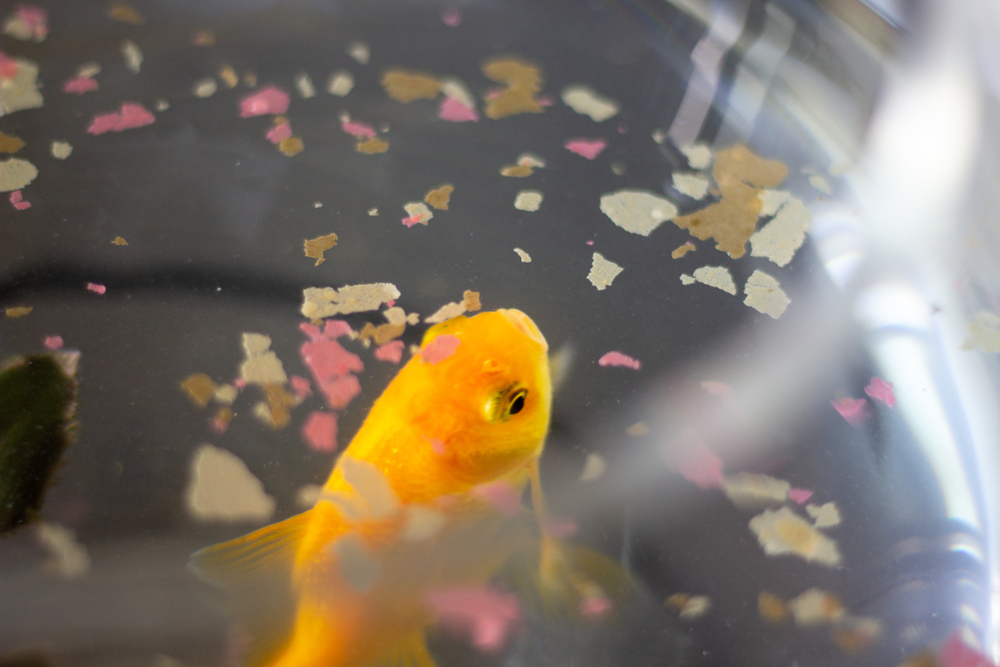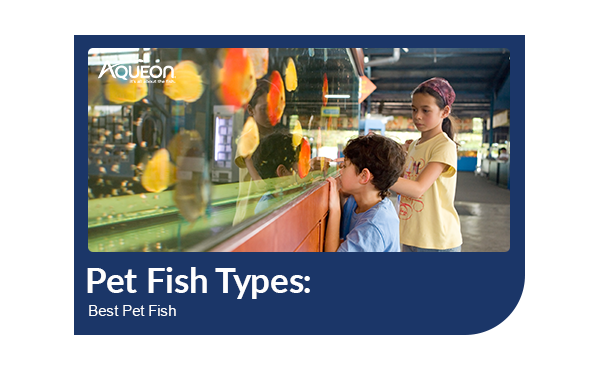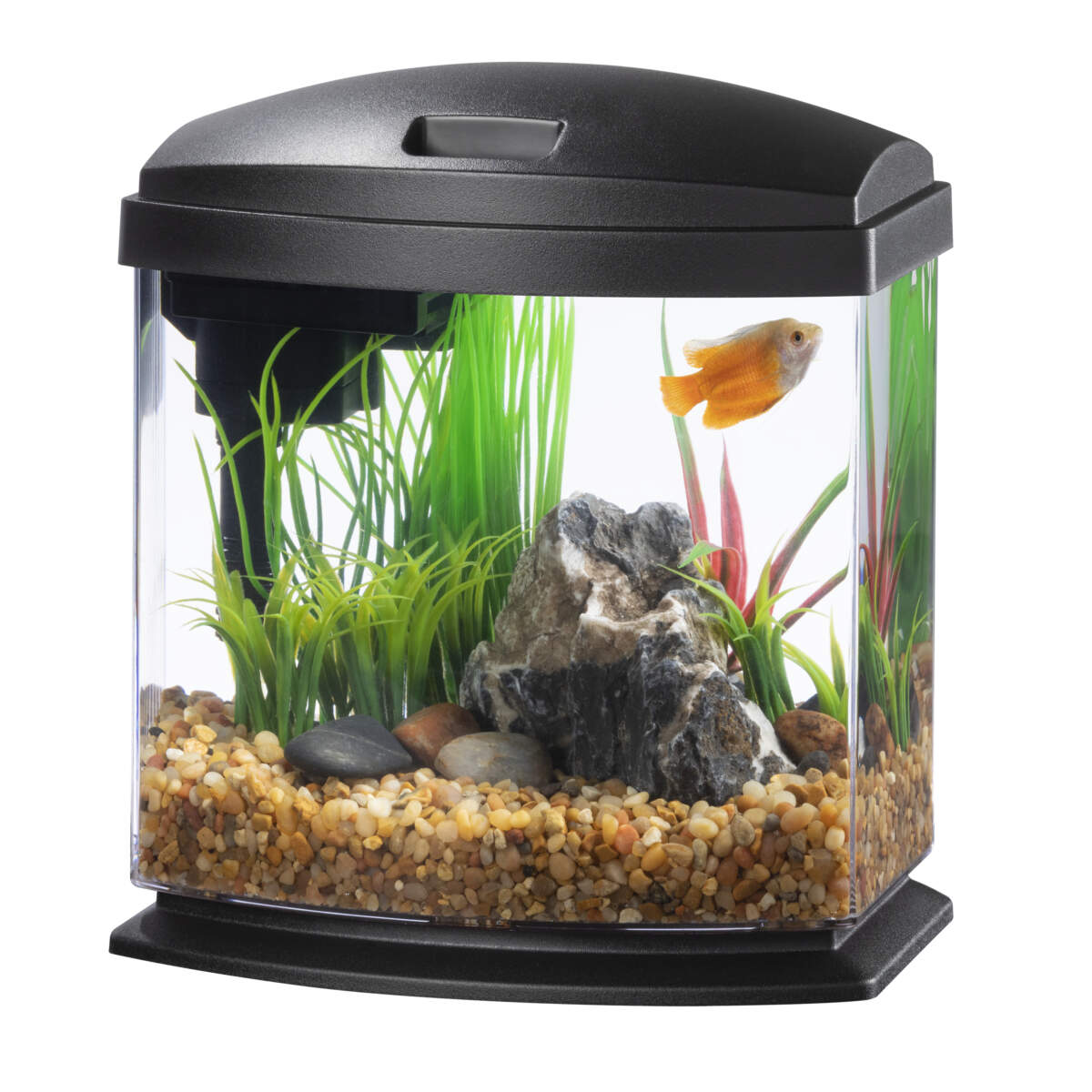How to choose the right fish food
When raising an aquarium full of fish, you want to provide the best environment possible. You've taken the time to make sure the species are all compatible, the water conditions are just right, and the lighting is perfect. But you may not realize that what you feed your fish is just as important. To have the healthiest fish and tank environment possible, you want to make sure you feed them the right fish food.

Meeting the Nutritional Needs of Fish
Ensuring your fish's nutritional needs are met is a big part of why finding the right fish food is important. Each ingredient should contribute to your fish's health, and you don't want to give them any fillers they don't need.
Aquarium fish fall into three categories: carnivores (meat eaters), herbivores (plant eaters), and omnivores (eat both meat and plants). By knowing preferences of your fish, you can make sure they get the right food. For example, if you have carnivores and herbivores in one tank, you might alternate between feeding plant-based and meat-based foods, so everyone gets what they need. Fish enjoy variety, so even carnivores can benefit from eating some plant matter, and herbivores may occasionally benefit from a little extra protein.
How to Read a Fish Food Label
If you want to make sure your fish get what they need, the first step is understanding how to read a fish food label. Ingredients on the label are listed with the highest concentrations first. For carnivorous fish, the first ingredients in their food should be a meat protein of some sort, like shrimp, worms, or insects. Most aquarium fish don't actually eat other fish in their natural habitat, so it's best to look for proteins other than fishmeal. Herbivores, meanwhile, prefer algae or vegetables of some sort as the top ingredients. They need about 15 to 30% protein in their food, while carnivores need 45%.
If you're wondering, "Why should I choose the right fish food?" part of the reason is that lower-quality foods may use low-quality fishmeal as a top ingredient. This type of fishmeal is cheaper to produce since it's made from what's left over after fish is processed for human consumption. (High-quality fishmeal is made from whole fish, like herring or anchovies, and can be a good source of protein.)
You may also notice grains and cereals in the top five ingredients. While these may not hold the nutritional punch that protein offers, they do serve a purpose — the starches help fish food maintain its shape, whether in pellet or flake form.
You also want to look for fish food labels with high percentages of vitamins, minerals, and essential amino and fatty acids, in addition to protein. Added vitamins and minerals are important — it just shouldn't be an overabundance. Vitamins C and E, for example, support fish immune health.
Difference Between Pellets and Flakes
Sometimes the species of fish you have will influence the type of food you choose. For example, large-sized pellets might be too big for neon tetras' mouths, while bigger carnivorous fish might be less interested in small flake crumbles. Even larger herbivores tend to enjoy vegetable pellets more than flakes.

In addition, some fish have zones they prefer to eat in. So a bottom dweller would be less interested in flakes that float at the surface, while a surface feeder might be less likely to eat heavy pellets that sink to the bottom quickly. If you have both types of fish, you ideally want to offer a mix of both types of food.
Remember that whatever food you choose, you should only feed your fish once or twice a day, and just enough food that everything is consumed within two to three minutes.
How to Get the Right Fish Food
If you're looking for the right fish food, one option that's easy to get is Nutrinsect. This food is 100% fish-free, so it more closely matches a fish's natural diet in the wild. It utilizes plants and sustainably sourced insect-based proteins, like mealworms, bloodworms, and black soldier fly larvae.
The food is designed for optimal fish palatability. And it provides complete daily nutritional needs, including spirulina for color enhancement, along with vitamins and minerals. Since it's fish-free, this product helps protect and sustain the Earth's oceans by not contributing to overfishing.
Nutrinsect is available in varieties for tropical fish, goldfish, and betta fish:
- Aqueon Nutrinsect Goldfish Pellets
- Aqueon Nutrinsect Goldfish Flakes
- Aqueon Nutrinsect Tropical Pellets
- Aqueon Nutrinsect Tropical Flakes
- Aqueon Nutrinsect Betta Pellets
Your choice of fish food isn't a decision to be taken lightly. Finding the right fish food is key to providing a healthy tank environment that will help your fish thrive. As an added bonus, when you choose Nutrinsect you're also choosing a sustainable food that helps support the environment.














